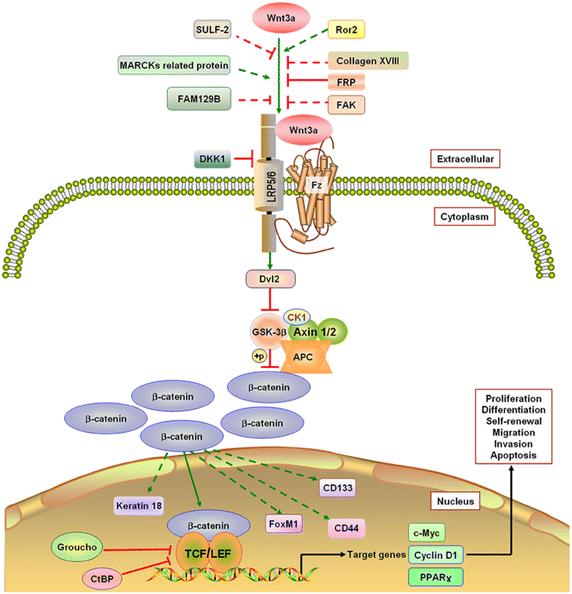What is WNT3 Protein
WNT3, or Wingless-Type MMTV Integration Site Family Member 3, is a crucial protein involved in a variety of developmental and physiological processes in humans. This protein is part of the WNT family, a group of signaling molecules that play a pivotal role in regulating numerous cellular functions. WNT3 is also known by various synonyms, including WNT3A, INT1, and MGC11027. Its official full name, Wingless-Type MMTV Integration Site Family Member 3, reflects its origin from the integration site of the mouse mammary tumor virus (MMTV) and its classification within the WNT family.
WNT3 Protein Structural Characteristics and Classification
WNT3 is a glycoprotein, meaning it contains carbohydrate chains. It is typically secreted as a lipid-modified protein, enabling it to be membrane-bound or released into the extracellular environment. WNT3 is classified as a member of the WNT family, which consists of 19 highly conserved proteins in humans. These proteins share a common structural feature – the presence of 22 to 24 conserved cysteine residues, which are essential for their biological activity.
Recent Research Advances about WNT3 Protein
Recent research has shed light on the multifaceted role of WNT3 in various cellular processes, including embryonic development, tissue homeostasis, and disease pathogenesis. Scientists are continuously uncovering the intricate details of WNT3's signaling pathways and its involvement in specific diseases, making it an attractive target for further investigation.
WNT3 Biological Functions and Molecular Mechanisms
- Biological Functions: WNT3 plays a pivotal role in embryonic development, specifically in the formation of various tissues and organs. It is essential for processes like axis formation, neural tube closure, limb development, and organogenesis. In adults, WNT3 is still active and involved in maintaining tissue homeostasis and repair.
- Molecular Mechanisms: The primary function of WNT3 is to activate a complex signaling cascade known as the Wnt signaling pathway. This pathway involves a series of intracellular events that ultimately lead to the regulation of gene expression and cellular behavior. WNT3 binds to a cell surface receptor, initiating a cascade of events that can result in cell proliferation, differentiation, and tissue growth.
WNT3 Related Signal Pathway
The Wnt signaling pathway, initiated by WNT3, is a highly complex and tightly regulated system. It can be categorized into two major pathways: the canonical (Wnt/β-catenin) and non-canonical pathways.
- Canonical Wnt/β-Catenin Pathway: In this pathway, WNT3 binding to its receptor triggers the stabilization and nuclear translocation of β-catenin. Once in the nucleus, β-catenin acts as a transcriptional coactivator, influencing the expression of target genes involved in cell proliferation and differentiation.
- Non-Canonical Wnt Pathways: Non-canonical pathways, which include the planar cell polarity (PCP) and Wnt/Ca2+ pathways, have diverse effects on cellular processes such as cell migration, cytoskeletal reorganization, and calcium ion signaling. These pathways are essential for the regulation of tissue polarity and cell movements during development.

Figure 1. The canonical Wnt3a pathway. (He S, et al., 2015)
WNT3 Related Diseases
Aberrant WNT3 signaling has been implicated in various diseases, including cancer. In several cancer types, such as colorectal cancer and breast cancer, dysregulation of the Wnt signaling pathway, often involving WNT3, contributes to uncontrolled cell growth and tumor progression. Additionally, mutations or abnormalities in WNT3 have been linked to developmental disorders and congenital anomalies.
WNT3's Applications in Biomedical
WNT3 has gained increasing attention in biomedical research, offering potential applications in diagnostic development, vaccine development, and therapeutics.
- Diagnostic Development: The dysregulation of the Wnt signaling pathway, involving WNT3, has been linked to various diseases, making it a potential target for diagnostic biomarkers. Detecting the levels of WNT3 or assessing the activity of the Wnt pathway can provide valuable insights into disease prognosis and potential therapeutic interventions.
- Vaccine Development: Researchers are exploring the use of WNT3 and other Wnt signaling components as targets for cancer immunotherapy. Developing vaccines that can stimulate the immune system to recognize and target WNT3-expressing cancer cells holds promise in the treatment of Wnt-driven cancers.
- Therapeutics: Given its critical role in cancer and developmental disorders, WNT3 has emerged as a potential target for drug development. Small molecules and biologics that modulate WNT3 activity or the Wnt signaling pathway could offer innovative therapeutic options for a range of diseases.
Recommended Products
| Cat.# | Product name | Species | Source (Host) | Tag |
|---|---|---|---|---|
| WNT3-205H | Recombinant Human WNT3, StrepII-tagged | Human | Human Cell | Strep II |
| WNT3-549HF | Recombinant Full Length Human WNT3 Protein, GST-tagged | Human | In Vitro Cell Free System | GST |
| WNT3-3076H | Recombinant Human WNT3 protein, His-tagged | Human | E.coli | His |
| WNT3-5161H | Recombinant Human WNT3, GST-tagged | Human | Wheat Germ | GST |
| WNT3-3738H | Recombinant Human WNT3, His-tagged | Human | E.coli | His |
| WNT3-3739H | Recombinant Human WNT3 Protein, DDK-tagged | Human | CHO | DDK |
| WNT3-5163M | Recombinant Mouse WNT3 Protein, His-SUMO-tagged | Mouse | E. coli | His-SUMO |
| WNT3-5160M | Active Recombinant Mouse WNT3 | Mouse | N/A | |
| WNT3-5164M | Recombinant Mouse WNT3 Protein, His-tagged | Mouse | Yeast | His |
| WNT3-5162M | Recombinant Mouse WNT3 Protein, His-tagged | Mouse | E. coli | His |
Reference
- He S, et al. Wnt3a: functions and implications in cancer. Chinese Journal of Cancer. 2015, 34: 1-9.

